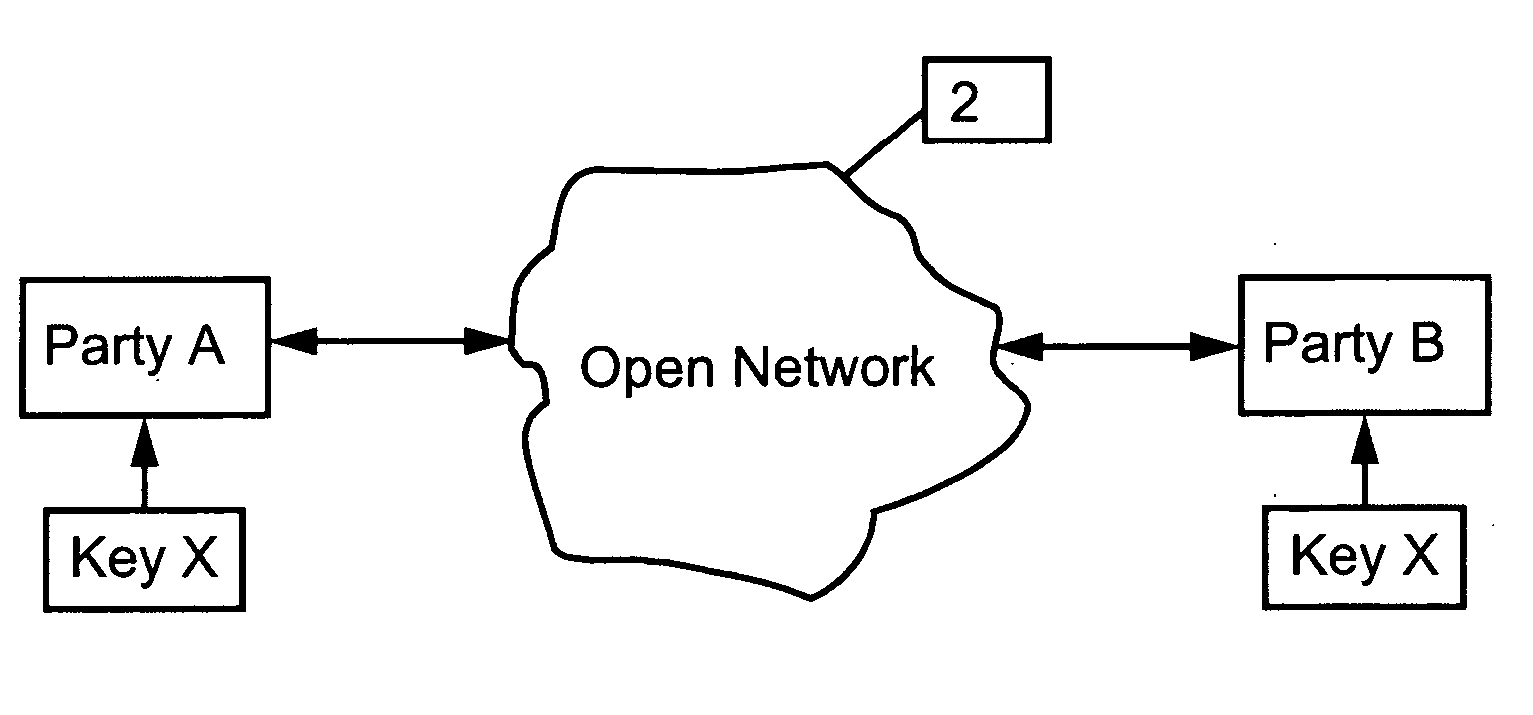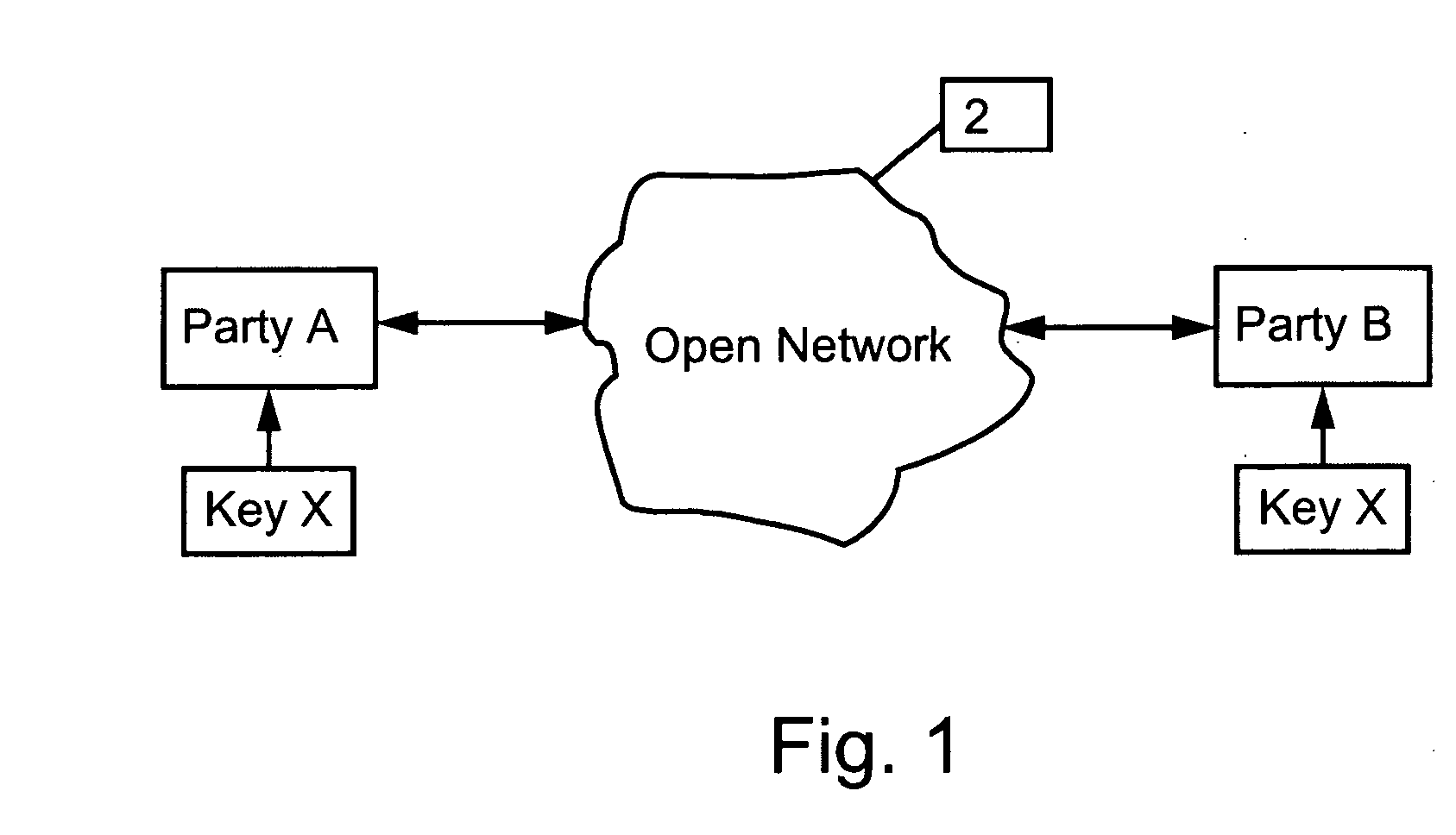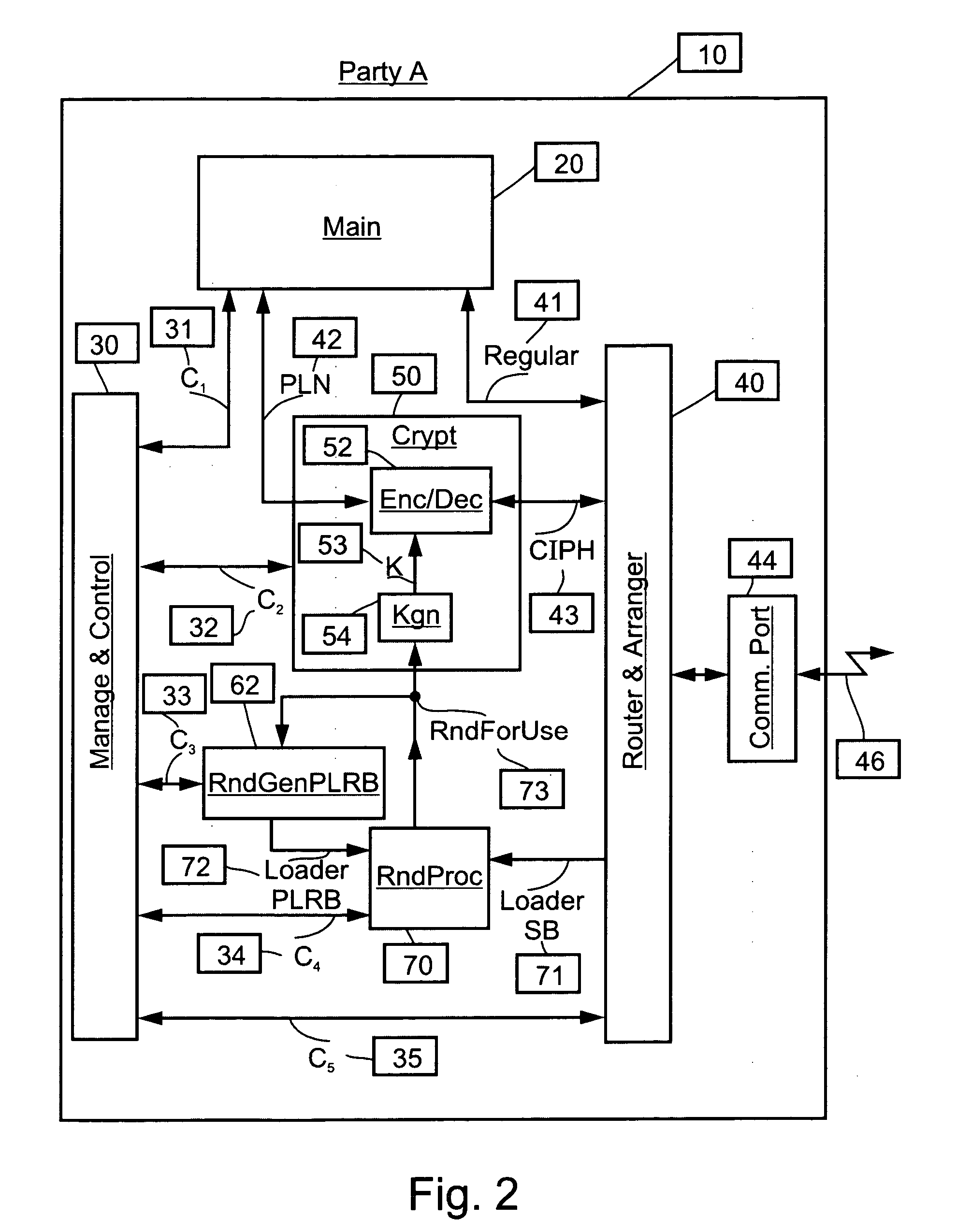Secure communication system and method using shared random source for key changing
a technology of shared random source and key change, which is applied in the direction of user identity/authority verification, digital transmission, synchronising transmission/receiving encryption devices, etc., can solve the problems of shortening the life of key changes, requiring frequent changes of key, and public key being needed for encryption, and being completely useless for decryption of messages
- Summary
- Abstract
- Description
- Claims
- Application Information
AI Technical Summary
Benefits of technology
Problems solved by technology
Method used
Image
Examples
Embodiment Construction
[0150]FIG. 1 is a simplified block diagram showing two users, Party A and Party B, communicating using a secure communication link over an open network 2 using an identical key, key x, generated by random processes, the key never having been transferred across any communication link, as will be explained in more detail below.
[0151] In the following, key management according to the present invention will be described with reference to symmetric encryption systems, which means that it requires an identical key for encryption and decryption at each of the parties to the communication. Possession of the key by an outsider allows an eavesdropper to read the message and also to alter messages as they pass by, the altered message appearing to the receiver as having been sent from the legitimate originator. Key management according to embodiments of the present invention allows the two parties to the communication to be in possession of the identical key without the key having been transfe...
PUM
 Login to View More
Login to View More Abstract
Description
Claims
Application Information
 Login to View More
Login to View More - R&D
- Intellectual Property
- Life Sciences
- Materials
- Tech Scout
- Unparalleled Data Quality
- Higher Quality Content
- 60% Fewer Hallucinations
Browse by: Latest US Patents, China's latest patents, Technical Efficacy Thesaurus, Application Domain, Technology Topic, Popular Technical Reports.
© 2025 PatSnap. All rights reserved.Legal|Privacy policy|Modern Slavery Act Transparency Statement|Sitemap|About US| Contact US: help@patsnap.com



